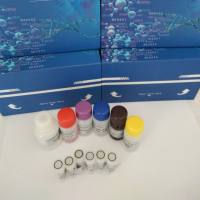Detection of DNA Damage by Comet Fluorescence In Situ Hybridization
互联网
436
Comet fluorescence in situ hybridization (Comet-FISH) is a useful method to detect overall and region-specific DNA damage in individual cells. Two well-established methods are combined, the Comet assay (single cell gel electrophoresis) and fluorescence in situ hybridization (FISH). The Comet assay is the method of choice for the detection of DNA damage. With the alkaline version the influence of specific substances such as water pollutants or ingredients of food on individual cells can be easily measured. The Comet assay involves the embedding of cells in agarose on microscopic slides, lysis of cells, and separation of DNA via electrophoresis. Damaged DNA migrates from the nucleus (head of the comet) forming a tail. The percentage of DNA in the tail correlates with the degree of DNA strand breaks (DNA damage). The combination of FISH with the Comet assay uses labeled probes which hybridize specifically to selected DNA sequences. This allows the detection of specific DNA damage or repair capacity in single cells. Here we present exemplarily the Comet-FISH method by detection of DNA damage using hydrogen peroxide as a genotoxic model substrate.









